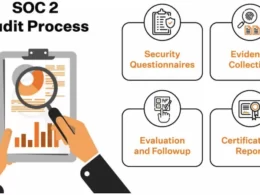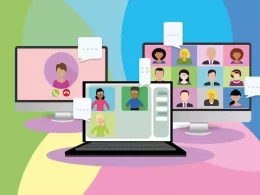As cryptocurrencies offer more freedom regarding programming and decision-making, developers are more than welcome to contribute to the blockchain and add improvements where necessary. This is the case of Ethereum, where, besides providing a way for making transactions fast, users have built different environments for other people to join and earn tokens, create groups and play games, all thanks to these smart contracts.
A smart contract is a program stored on the blockchain that runs through the code’s written lines. They are usually making transactions run faster since there’s no need for a third party’s involvement in an agreement. But this technology also allows developers to build innovative DApps and tokens, which is why Ethereum provides plenty of resources and tutorials for users to get started with programming. It’s an ingenious way to maintain the blockchain since so many people are interested in these matters. So, let’s see what the basics of smart contract programming on Ethereum are. Ready?
Get started
The first thing you need to do is access Ethereum’s website, on which you’ll find many tutorials for beginners. Moreover, you’ll need to learn some basics terms in order to grasp the concept of blockchain, like:
- Peer-to-peer networking is the direct exchange of assets between any individual parties;
- Public key cryptography, an address with which you can store your private key that you can access your wallet with;
- The blockchain is a global ledger or the database of all transactions;
- Node is a term for running the blockchain protocol and ensuring that all transactions and blocks follow its rules;
- Mining is the process of generating new coins and verifying transactions;
- Gas is a fee required to conduct a transaction or execute a contract on the Ethereum platform;
- DApps are decentralized apps that use smart contracts;
Another basic knowledge represents the coding languages you need to know, from C++, Go, Python and Java. However, you can focus on just one and then take it further to learning and using programming languages. For Ethereum, the best one is Solidity, which is the best to write and run smart contracts. But, as you’ll find on the Ethereum official website, there are more programming communities for Dart, Delphi, Ruby and Rust developers. You can even create a new community of your preferred language.
Use DApp frameworks and other tools
Although the first paragraph represents the basic requirements for programming, you may find yourself having more success with these DApps provided by other devs, some of which include:
- Truffle, a testing framework that uses the EVM to help users built-in smart contract compilation, execute scripts through an external script runner and have a migration platform;
- Meteor, a web app framework that allows people to build and deploy web, mobile and desktop applications in JavaScript;
- API DApps that allow developers to interact with on-chain data and utilize the endpoints provided by the API (application programming interfaces);
On the other hand, if you want to learn more about Ethereum, you might want to know more about its price, for example. So, you should check out Binance, since this aspect of the blockchain can help you understand how this cryptocurrency can be improved and how the whole environment contributes to the popularity of Ethereum.
What does the workflow look like?
There are four basic steps to deploying smart contracts:
- Start and Ethereum node
- Compile your Solidity smart contract
- Deploy your compiled contract to the network
- Use JavaScript API to interact with your smart contract
Programming on Ethereum
Now we’re getting into serious matters. You’ll be able to program your first smart contract using the knowledge and previous tools, but you need to have some patience because you’ll do a lot of testing. Don’t worry; the Ethereum website got your back with its code sandbox, where you’ll learn more about error checking, administering smart contracts and using open-source building blocks.
Using Truffle, the DApp we discussed before, you’re going to start a client node by running a testing tool (preferably testrpc) which you’ll need to deploy so that you’ll be able to check on any occurring errors. Then, you’ll have to analyze the contract by these variables:
- The wallet address of the organizer;
- The uint (unsigned integer) that needs to remain simple;
- The contract is public, meaning it can be called from outside the contract;
- The mappings or arrays that will be used to store how much each user has paid so they can get refunds later on;
After analyzing these important things, you’ll need to write more tests for contract function, transactions, and sending transactions, which are crucial things a smart contract needs to do. We know these things sound unfamiliar, but there are many ways through which the Ethereum community gives help.
For example, you can find on their website a few games that will get you through the basics, like:
- CryptoZombies, where you’ll learn Ethereum’s programming language, Solidity. This course has interactive coding lessons that will help you build a zombie army while grasping the basics of creating a smart contract;
- Ethernauts, a game where you “hack” smart contracts by completing levels so you can better understand how they are made;
- Capture the Ether, which is a similar game, but you learn more about the security of Solidity;
There are also paid online courses that will introduce you more to the world of smart contracts, such as:
- ChainShot, a bootcamp about Solidity, Vyper and web3;
- NFT School, where you’ll learn more about NFTs from the technical side;
- Speed run Ethereum, where you can test your knowledge on Solidity;
Wrapping up
If you’re not used to programming at all, these terms and actions might sound way too complicated, but as long as you’re passionate about the blockchain, you have the chance of becoming one of Ethereum’s developers. After all, most of these codes have already been done and solved by previous users, so you mostly need to learn patterns and observe how they behave. Although blockchain technology is pretty new, we’re here to make it better and accessible for everyone.











